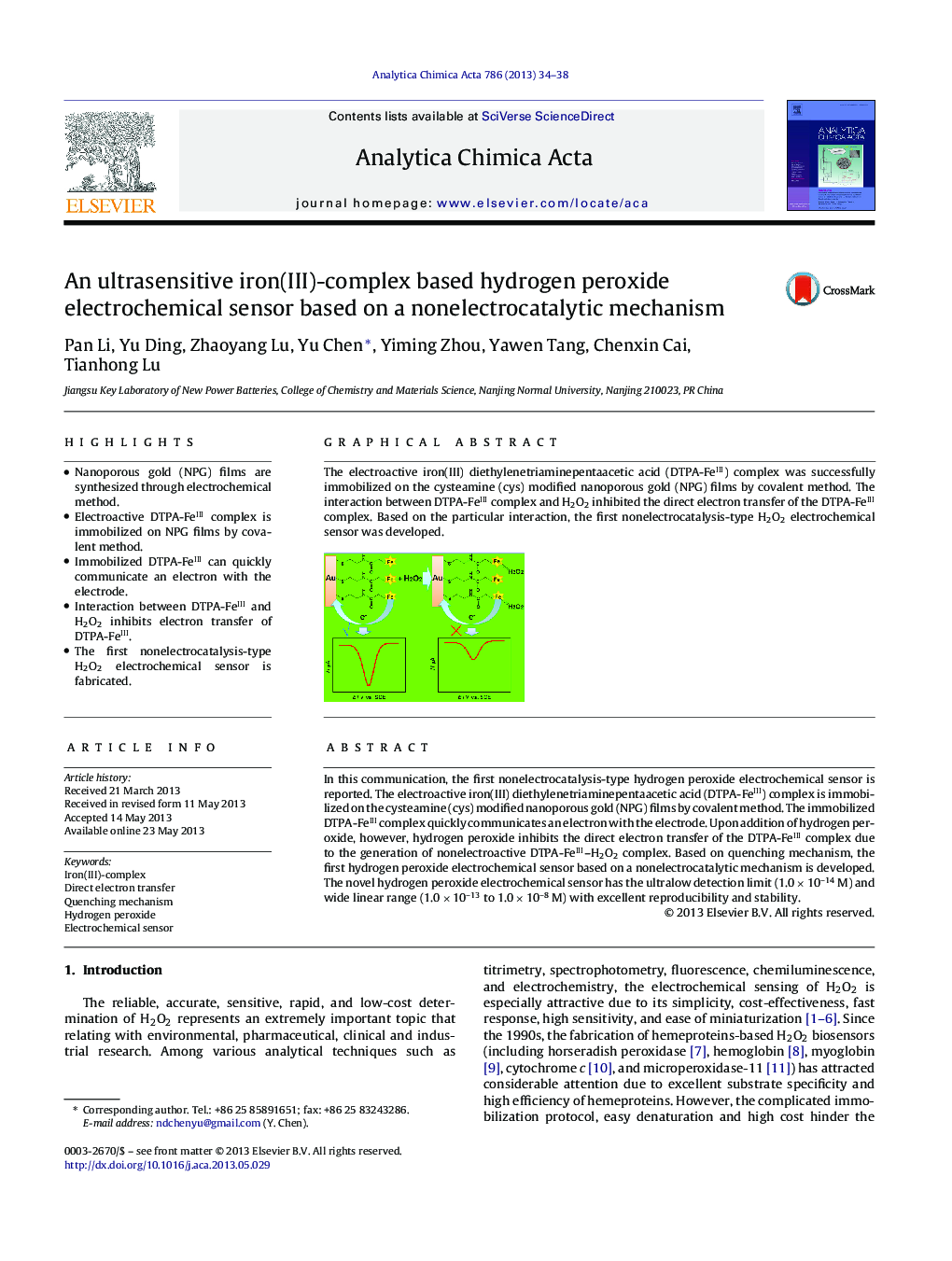| Article ID | Journal | Published Year | Pages | File Type |
|---|---|---|---|---|
| 1164685 | Analytica Chimica Acta | 2013 | 5 Pages |
•Nanoporous gold (NPG) films are synthesized through electrochemical method.•Electroactive DTPA-FeIII complex is immobilized on NPG films by covalent method.•Immobilized DTPA-FeIII can quickly communicate an electron with the electrode.•Interaction between DTPA-FeIII and H2O2 inhibits electron transfer of DTPA-FeIII.•The first nonelectrocatalysis-type H2O2 electrochemical sensor is fabricated.
In this communication, the first nonelectrocatalysis-type hydrogen peroxide electrochemical sensor is reported. The electroactive iron(III) diethylenetriaminepentaacetic acid (DTPA-FeIII) complex is immobilized on the cysteamine (cys) modified nanoporous gold (NPG) films by covalent method. The immobilized DTPA-FeIII complex quickly communicates an electron with the electrode. Upon addition of hydrogen peroxide, however, hydrogen peroxide inhibits the direct electron transfer of the DTPA-FeIII complex due to the generation of nonelectroactive DTPA-FeIII–H2O2 complex. Based on quenching mechanism, the first hydrogen peroxide electrochemical sensor based on a nonelectrocatalytic mechanism is developed. The novel hydrogen peroxide electrochemical sensor has the ultralow detection limit (1.0 × 10–14 M) and wide linear range (1.0 × 10–13 to 1.0 × 10–8 M) with excellent reproducibility and stability.
Graphical abstractThe electroactive iron(III) diethylenetriaminepentaacetic acid (DTPA-FeIII) complex was successfully immobilized on the cysteamine (cys) modified nanoporous gold (NPG) films by covalent method. The interaction between DTPA-FeIII complex and H2O2 inhibited the direct electron transfer of the DTPA-FeIII complex. Based on the particular interaction, the first nonelectrocatalysis-type H2O2 electrochemical sensor was developed.Figure optionsDownload full-size imageDownload as PowerPoint slide
